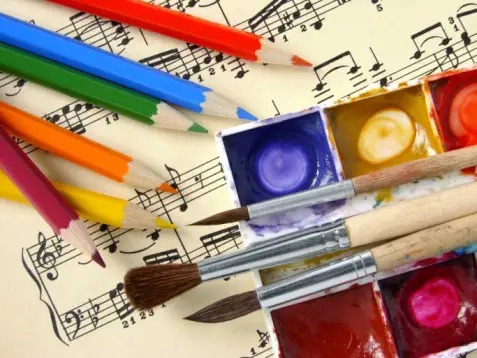Visual arts education in early childhood plays a crucial role in the holistic development of young children. During these formative years, children are highly receptive to new experiences and learning opportunities. Engaging in visual arts activities not only nurtures creativity but also supports cognitive, emotional, social, and physical development. This article explores the importance of visual arts education in early childhood, highlighting its multifaceted benefits and its role in fostering well-rounded growth.
Encouraging Creativity and Imagination
One of the most significant benefits of visual arts education in early childhood is the encouragement of creativity and imagination. Young children are naturally curious and imaginative, and art provides an outlet for them to express their thoughts, ideas, and feelings. Activities such as drawing, painting, and sculpting allow children to explore different materials and techniques, fostering a sense of creativity that is essential for problem-solving and innovation in later life.
Creativity nurtured through visual arts education is not limited to artistic endeavors; it also extends to other areas of learning and development. For instance, a child who regularly engages in creative activities is likely to approach academic challenges with an open mind and a willingness to experiment with different solutions.
Enhancing Cognitive Development
Visual arts education significantly contributes to cognitive development in early childhood. When children engage in art activities, they develop important cognitive skills such as observation, analysis, and critical thinking. For example, deciding how to represent an object or scene on paper requires careful observation and interpretation of visual information.
Furthermore, visual arts activities help children understand spatial relationships and concepts such as shape, size, and proportion. These skills are foundational for subjects like mathematics and science. For instance, understanding geometric shapes and their properties can be enhanced through drawing and sculpting activities.
Supporting Emotional Expression and Regulation
Art provides a safe and constructive way for young children to express and manage their emotions. Through visual arts, children can communicate feelings that they might not yet have the words to describe. This form of self-expression is particularly beneficial for children who may struggle with verbal communication or who are dealing with complex emotions.
Engaging in art activities can also be therapeutic, helping children process and cope with their emotions. The act of creating something can be calming and reassuring, providing a sense of accomplishment and boosting self-esteem. As children learn to express themselves through art, they develop greater emotional intelligence and resilience.
Promoting Social Skills and Collaboration
Visual arts education fosters social skills and collaboration among young children. Many art activities involve group work, where children must share materials, take turns, and work together to create a collective piece of art. These collaborative experiences teach important social skills such as communication, cooperation, and empathy.
Working on art projects with peers also helps children understand different perspectives and appreciate diversity. They learn to respect others’ ideas and contributions, which is essential for building positive relationships and social competence.
Developing Fine Motor Skills
Fine motor skills are crucial for early childhood development, and visual arts education provides ample opportunities for children to refine these skills. Activities such as drawing, painting, cutting, and sculpting require precise hand-eye coordination and control. These activities strengthen the small muscles in the hands and fingers, which are necessary for tasks such as writing, tying shoelaces, and using utensils.
The development of fine motor skills through art activities also supports other areas of physical development. For example, manipulating clay or dough can improve hand strength and dexterity, which are important for overall physical coordination and movement.
Enhancing Visual Literacy
In today’s visual-centric world, developing visual literacy is increasingly important. Visual arts education helps young children become more aware of the visual elements in their environment. They learn to interpret and understand images, symbols, and visual narratives, which enhances their ability to communicate and comprehend visual information.
Visual literacy skills are essential for navigating the modern world, where visual media plays a significant role in communication and information dissemination. By developing these skills early on, children are better prepared to engage with and understand the visual aspects of their surroundings.
Building Confidence and Self-Esteem
Participating in visual arts activities can significantly boost a child’s confidence and self-esteem. The process of creating something unique and personal gives children a sense of accomplishment and pride. Displaying their artwork, whether at home, in the classroom, or in community spaces, further reinforces their sense of achievement and validates their efforts.
As children receive positive feedback and recognition for their artistic endeavors, they develop a stronger sense of self-worth and confidence in their abilities. This confidence can extend to other areas of their lives, encouraging them to take on new challenges and pursue their interests with enthusiasm.
Supporting Language Development
Visual arts education also supports language development in early childhood. Discussing their artwork and the creative process helps children expand their vocabulary and improve their communication skills. They learn to describe colors, shapes, textures, and actions, which enhances their ability to express themselves verbally.
Moreover, storytelling and narrative skills can be developed through art activities. When children create visual stories or illustrate scenes from their imagination, they practice organizing their thoughts and conveying them coherently. This practice supports both oral and written language development.
Cultivating a Lifelong Appreciation for the Arts
Introducing visual arts education in early childhood lays the foundation for a lifelong appreciation for the arts. Exposure to different art forms and mediums broadens children’s horizons and helps them develop an appreciation for creativity and cultural expression. This early engagement with the arts can inspire a lasting interest and involvement in artistic activities, whether as a hobby, profession, or means of personal expression.
Conclusion
The importance of visual arts education in early childhood cannot be overstated. It plays a vital role in fostering creativity, enhancing cognitive and emotional development, promoting social skills, and supporting physical development. By integrating visual arts into early childhood education, we provide children with essential tools for their holistic growth and development. As they explore and create, they build a strong foundation for lifelong learning, creativity, and appreciation for the arts. Investing in visual arts education for young children is an investment in their future, equipping them with the skills and confidence to thrive in an ever-changing world.





